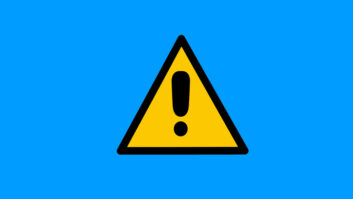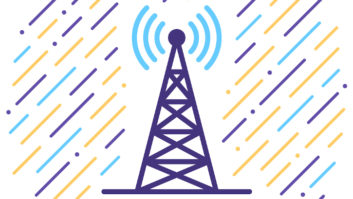The author is membership program director of the National Federation of Community Broadcasters. NFCB commentaries are featured regularly at www.radioworld.com.
In case you missed it, FEMA has announced the date of the next national test of the Emergency Alert System. It is coming up far sooner than many stations realize. In fact, now is a good time for community and all stations to get prepared.
The next test happens Aug. 7 at 2:20 p.m. Eastern time. The backup date in the event the announced date cannot be met is August 21.
This year’s test is expected to be different than previous iterations, in that it will be disseminated only via the EAS broadcast-based channels rather than the internet-based IPAWS system. It is expected that using this form of contact will help authorities to assess whether and how the national EAS would function if activated. Considering a national emergency could involve the internet and connectivity being compromised, such a test of the EAS seems warranted.
[Read: Community Broadcaster: Protect Our Own]
In some circles, there are misconceptions about the national EAS test. In truth, all radio stations are required to comply with FCC EAS rules and must participate in this year’s test. Full- as well as low-power stations are required to carry emergency tests.
In April, the FCC issued an assessment of last year’s test. Of the 13,435 radio stations participating in the nationwide EAS test last year, just over 96% successfully received the test with around the same percentage successfully retransmitted it. It determined poor audio quality, out-of-date equipment and/or software and source issues were among the biggest problems documented by stations.
A big part of the lead up to the national test is the filing of Form One, which documents a station’s equipment status. Form One is due by July 3. A station should file a separate copy of Form One for each of its EAS decoders, encoders or combined decoder/encoder units.
On the day of the test, there is Form Two to complete by a station. It should indicate compliance and issues related to the national test. On September 23, Form Three offers further insights. However, Form One is a community radio station’s most pressing priority.
How should your station prepare for the test? First and foremost, your station should review last year’s Form One filings to identify and update information previously reported. Next, it is essential that your station ensure its EAS equipment can receive and process the National Periodic Test code and otherwise comply with FCC regulations. For the uninitiated, the National Periodic Test code is the national location code shown via six zeroes on your screen.
As you prepare your gear, it is smart to update your EAS equipment software and firmware to the most recent versions. In addition, you should manually synchronize your EAS equipment clocks to the official time recognized by testing entities, in the event your equipment doesn’t otherwise synchronize the time.
While you’re at your equipment, make a point to review your State EAS Plan for source monitoring assignments. This is a fancy way of helping your EAS equipment know which sources to monitor for signals and emergencies.
However, there are plenty of nontechnical things your station should be doing now. Put a copy of the EAS Operating Handbook at your EAS equipment positions, or in a place where it is otherwise available immediately to operators. Lost your copy somewhere? The EAS Operating Handbook is available for download here.
The EAS Operating Handbook is a grand resource. Your station should look over it and determine the actions to be taken by operators on duty. Training and communication of what operators should do is important. You may tailor actions specific to your facilities as necessary;
Emergency services like EAS are core to how radio serves its cities and towns. And community radio can connect to first responders and wider audiences through serving as a conduit for critical messages like these. The Form One deadline coming up is our first step in fulfilling that promise successfully.
[Subscribe to our newsletter and get it delivered right to your inbox.]












